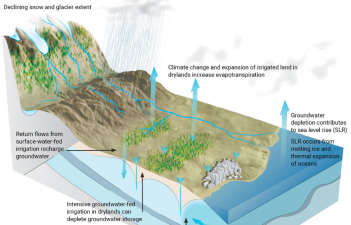Water on land can be divided into surface water and groundwater due to its different spatial distribution. Surface water refers to the collective term for water found in bodies of water such as rivers, lakes, swamps, glaciers, and ice sheets; it is also known as land water. Groundwater refers to water stored in saturated rock and soil pores, fissures, and caves below the surface.
Deep underground springs in nature reserves are particularly valuable due to their high quality and limited availability.
General Characteristics of Groundwater:
① Clean Water and Natural Safety: Groundwater, thanks to the pores and sand particles of varying sizes in the soil, filters the water layer by layer, removing impurities, toxic substances, and suspended particles. The resulting water is clear, clean, low in suspended impurities, turbidity, and bacteria, making it naturally safer.
② Stable Water Quality and Resistant to Pollution: Groundwater flows more slowly, and its water quality parameters change more slowly, making it more stable and less susceptible to external environmental influences and contamination, reducing the chance of direct contamination.
Key Characteristics of Surface Water:
① Susceptibility to Pollution: Compared to groundwater, surface water is more susceptible to varying degrees of contamination by acid rain, pesticides, and other organic matter, making it more susceptible to contamination.
② Unstable Water Quality: Surface water has high turbidity and bacterial content. The production environment for surface water is complex, and factories are mostly for public use, making the production process highly susceptible to contamination and unstable water quality.
Distribution of Water Resources on Earth
Earth, known as the "Water Ball," possesses an enormous amount of water resources. However, 96.5% of this water is concentrated in the oceans and is classified as saltwater. Terrestrial water, including both surface and groundwater, accounts for only the remaining 3.5%. Furthermore, 50% of terrestrial water is stored in solid form in glaciers and permafrost, while groundwater accounts for a whopping 47%. In contrast, water in lakes, rivers, organisms, and the air accounts for only 3%. Therefore, it can be said that half of all freshwater resources are hidden underground. Groundwater reserves are undoubtedly vast, seemingly endless, like a well that, once tapped, provides an endless supply.
Classification and Application of Groundwater Resources
Groundwater can be divided into vadose zone water, groundwater, and confined water based on its burial conditions. The vadose zone, technically, refers to the area above the water table to the surface. More generally, it's the zone where most plant roots absorb water. Groundwater, known as groundwater, exists below the surface, above the first stable aquiclude. It is characterized by a free surface and relatively shallow depths. Confined water, on the other hand, is trapped between two relatively impermeable layers. Due to its pressure-bearing properties, it typically exists deep underground. Groundwater is primarily stored in porous rock formations, with groundwater and confined water being the most commonly used by humans.






